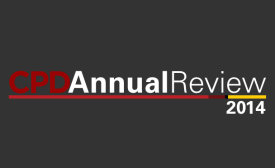china
Since 2010, the country's Ministry of Culture has poured manpower into organizing myriad Chinese New Year events worldwide, in partnership with overseas business entities and cultural organizations.
The 2014 CPD Annual Review demonstrates that although public diplomacy is present in every region of the world, it is predominantly in the northern hemisphere. North America is ranked the most active region in public diplomacy, with the United States contributing the most. Asia (Asia Pacific, Southeast Asia and Central Asia combined) comes in second, and Europe is third, with almost the same presence as Asia. As expected, China, Japan, and South Korea take the lead as the major actors in Asia Pacific. India is also very active in PD in South Asia.
As part of the CPD Annual Review process, in January we highlighted some of the year’s key public diplomacy moments in our Top 10 List of the most notable stories from 2014.
In just seven (2008-2015) years, China has developed the longest network of high speed railway (about 16,000 km with the expectation of adding another 16,000 km by 2020) in the world as well as some of the best technologies related to high speed railway development. Besides its obvious economic and technological successes, China’s high speed railway also has huge foreign policy implications in three ways.
Tensions over cybersecurity are building between the U.S. and Beijing after the latest string of hacking attacks in the United States, some of which have been traced back to China. The two countries have dug in their heels on differing approaches to cybersecurity and don’t appear ready to budge, experts say.
Launched in 2013, the CPD Annual Review was developed to serve as a guide to understanding the global landscape of public diplomacy, its ebbs and flows, its triumphs and its shortcomings.

Capturing the scope and scale of PD around the world through an analysis of English-language news stories from 2014.
In Washington D.C.’s Chinatown, a nonprofit called the The Wong People Association, trains community members every year to perform the traditional lion dance during new year festivities.







